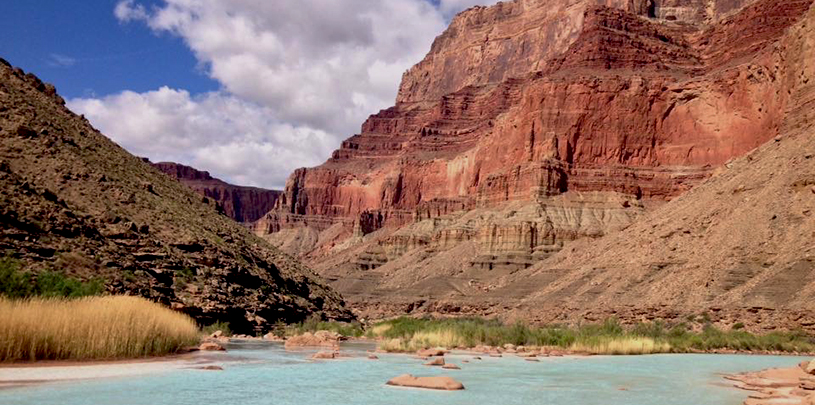
 by Roger Clark, Grand Canyon Director
by Roger Clark, Grand Canyon Director
The Federal Energy Regulatory Commission (FERC) has approved applications to study the feasibility of building two massive hydroelectric projects in the Little Colorado River Gorge on the Navajo Nation. Both projects would dam the tributary, within miles of where it joins the main stem of the Colorado River inside Grand Canyon National Park.
READ: The FERC orders issuing a preliminary permit for the Little Colorado River project here and for the Salt Trail Canyon project here ›
FERC approved the applications despite concerns and objections raised by the Navajo Nation, the Hopi, Havasupai, and Hualapai tribes, the U.S. Department of the Interior, the Arizona Game and Fish Department, a coalition of conservation organizations, including the Grand Canyon Trust, and many other entities and individuals.

EXPLORE: Check out an interactive map of the proposed projects ›
FERC’s decisions are not surprising, given that it rarely denies preliminary permit applications to conduct feasibility studies.
Nonetheless, FERC’s decisions are disappointing, given that we already know what the feasibility studies and the subsequent environmental assessments and consultations with tribal nations will show. The pumped storage hydroelectric projects would devastate the Grand Canyon’s largest tributary and rob it of core hydrological, biological, and cultural values that are essential to its existence as a national park and a World Heritage site.
The less-than-bad news is that FERC did not approve these wrongheaded projects for construction. They simply gave the applicant, Phoenix-based Pumped Hydro Storage LLC, the exclusive right for the next three years to file license applications. No other developer can file competing applications during that time.
In response to all of the concerns and objections raised about the projects, FERC said they are all “premature.”
In both decisions, the agency said: “The purpose of the permit is to secure the permit holder’s priority for hydropower development while it studies the feasibility of the project, including studying its potential impacts. Should the permittee file a license application, the issues raised can be addressed in the licensing process.”
In addition, FERC’s permits do not grant Pumped Hydro Storage permission to access the land to conduct feasibility studies for the proposed projects. The Navajo Nation may deny the developer access to conduct feasibility studies, given that its local government, the Cameron Chapter, voted unanimously to oppose the projects.
Meanwhile, in March, Pumped Hydro Storage submitted an application to study the feasibility of building yet another set of dams in Big Canyon, a tributary that enters the Little Colorado River just above where one of the two previously proposed projects would be built. FERC has yet to accept the application. When it does, affected parties and citizens will have 60 days to file comments on this developer’s latest scheme to exploit the greater Grand Canyon’s land and its waters.

The Trust supports the Save the Confluence coalition’s campaign to protect the confluence of the Colorado and Little Colorado rivers and the Little Colorado River Gorge from commercial and industrial development. We are honored to be working with and learning from Native partners and advocates who view the entire Grand Canyon as an interconnected hydrological, ecological, and cultural landscape and home to their ancestors.
Please join the Grand Canyon Trust in our work to Keep the Canyon Grand!
80% of Arizona voters support Baaj Nwaavjo I'tah Kukveni National Monument, according to a new poll.
Read MoreThe Colorado River below Glen Canyon Dam is heating up. Find out why.
Read MoreGroundwater pumping at a uranium mine near the Grand Canyon will affect the canyon's springs, scientists says.
Read More